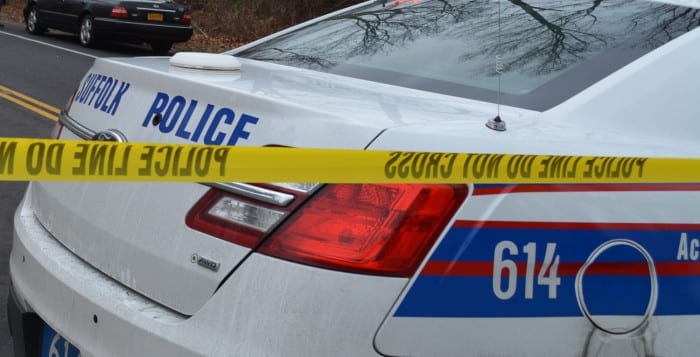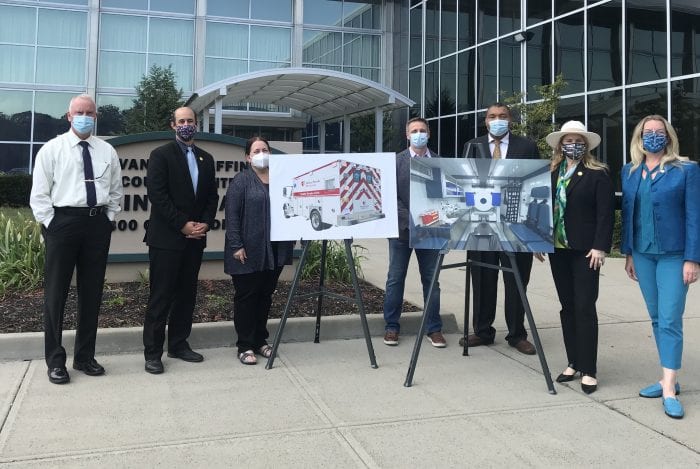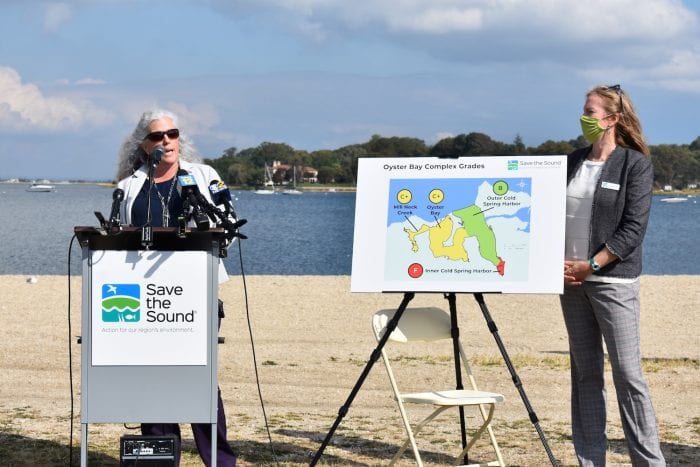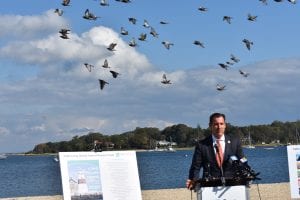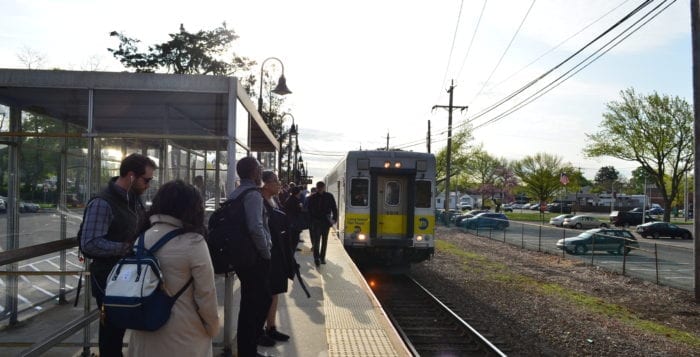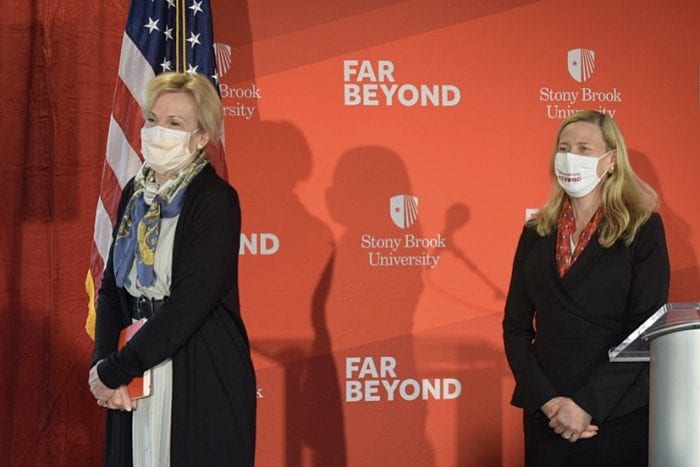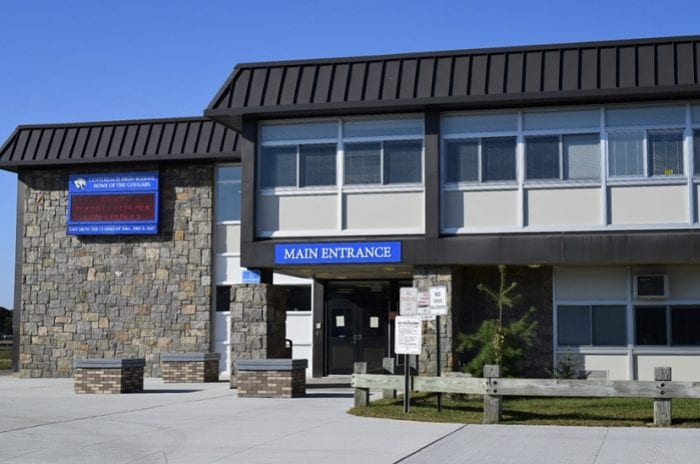Coming to a town near you: another Trump caravan.
The Setauket Patriots announced they would be hosting a Trumpalozza Road Rally event starting and eventually ending in Port Jefferson Saturday, Oct. 17.

Setauket Patriots organizer James Robitsek said he expects 800 to 1,000 participants. On the group’s Facebook page, a little over 400 say they will be attending, with more indicating they possibly may.
The car caravan is just the third event hosted by Setauket Patriots, an online right-wing group that often posts in support of President Donald Trump (R), among other conservative and far-right messaging. Previous events have been based on Fourth of July and Veterans Day celebrations, though each has carried a strong political tinge in support of Trump. Out of these other past events, this one is the most explicit in its support.
The caravan is to start in the parking lot of the Port Jefferson LIRR train station before moving down Main Street then turning left onto West Broadway. Cars are set to move onto Route 25A in Setauket, down into St. James along Lake Avenue, past the Smith Haven Mall. The caravan will move through Centereach and Selden before turning onto County Road 83 and back onto Route 112 to finish back at the Port Jeff train station.
Robitsek said he has been in contact with Suffolk County police about the event, and though they might be around to facilitate cars leaving the parking lot, they will not be there for the entire run of the car parade.
Other car caravans in support of Trump have passed through the North Shore in the past month. Several went from Huntington out to the North Fork, where people hung out sunroofs and stood in the back of pickup trucks. Pictures also show people in the caravan had placed tape to obscure their license plates, which is against the law.
Robitsek said he has not advocated that drivers use tape on their license plates, but participants in other pro-Trump events have been outed online by people tracking their license numbers.
Despite this, police report nobody in the caravans has been arrested to date, though one resident from Northport was arrested by Northport police for alleged menacing and disorderly conduct involving a caravanner’s truck, something he has reportedly heavily disputed.
The planned caravan is only three days before Robitsek and the Setauket Patriots are set to be in village traffic court, Oct. 20, over their previous Veterans Day event, which drew hundreds down through the village without a permit. Most marching that day did so without masks.
Village of Port Jefferson had issued an executive order signed July 6 by Mayor Margot Garant effectively stopping the village from signing any new permits for marches or protests. This was in response to the Patriots’ July 4 car parade as well as a Black Lives Matter march hosted in Port Jeff in June. The order was enabled by the village’s previous declaration of emergency because of the COVID-19 pandemic, and Garant has said the issue is with how many people these events bring together during a pandemic.
On Facebook, Robitsek said they were issued a summons on Oct. 5, and claimed local officials from village, county and state were targeting him and his group.
“I’m being unfairly targeted because I’m a pro-Trump group in an all-Democrat town,” he said, adding the reason they chose Port Jeff as their starting point was “its high visibility, it’s a Democrat-run village, so why not show support for the silent majority that does support President Trump.”
Village officials have previously said the Patriots submitted a permit application for the July 4 event, but that they failed to file it correctly, and that they did not pay fees attached to the permit process.
The Setauket Patriots organizer posted the summons online, which said the offense was because they “led a procession/parade down a public sidewalk without a permit” in violation of village code. The Setauket Patriots have also planned a rally in front of Village Hall Oct. 20 in protest of receiving the summons.
Deputy Village Attorney Rich Harris said the summons was only for the violation of the village code, which depending on a plea or a court ruling could result in a 0 to $2,000 fine or up to 15 days in jail. On its face, the violation does not have anything to do with recouping losses from either police or constable’s overtime.
“It’s a violation of the village code for operating a parade or procession without permit,” Harris said.
Whether this event could also be in violation of village code depends on how the event proceeds, Harris said. It could be different, especially as most people will be in vehicles and that the caravan will not be exclusive to Port Jeff.
The car caravan is scheduled for the same day and time as the Greater Port Jefferson Chamber of Commerce’s Pumpkinmania, that’s set to bring in professional pumpkin carvers to do live demonstrations as well as host a pumpkin carving contest.
Barbara Ransome, executive director of the chamber, said she is not worried that the caravan would impact the chamber’s event. Pumpkinmania will be held 12 to 7 p.m. and will be located at 138 E. Main St. in the small brick patio area. There will also be a set of pumpkin carving contests for Port Jefferson residents, one for children and one for adults, that will be judged by the professionals. There is a $5 entrance fee for each participant.
Ransome said the caravan of cars will likely have already moved on, and there will be plenty of time afterward for people to come down. The chamber event is also designed to promote the small businesses on East Main Street.




